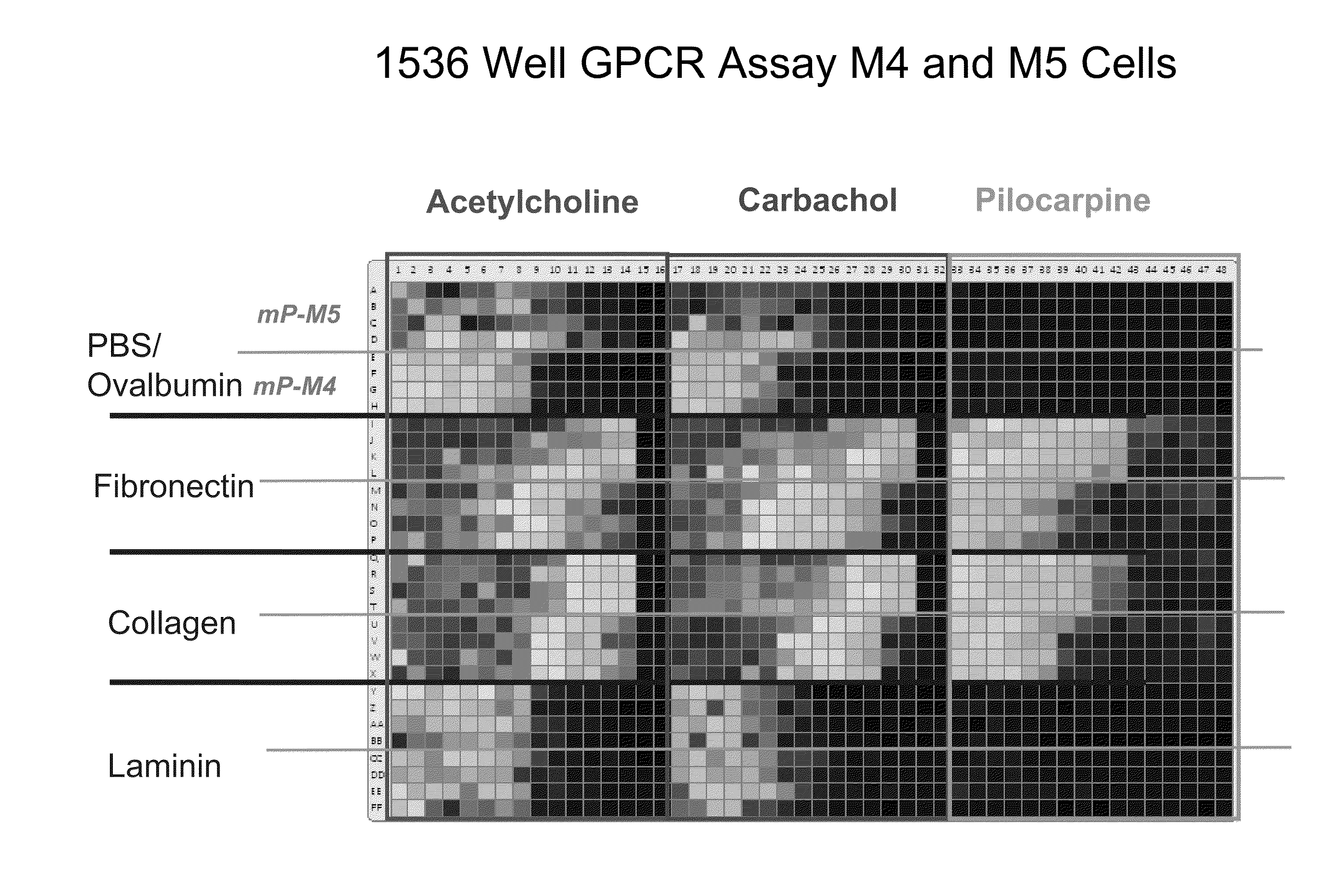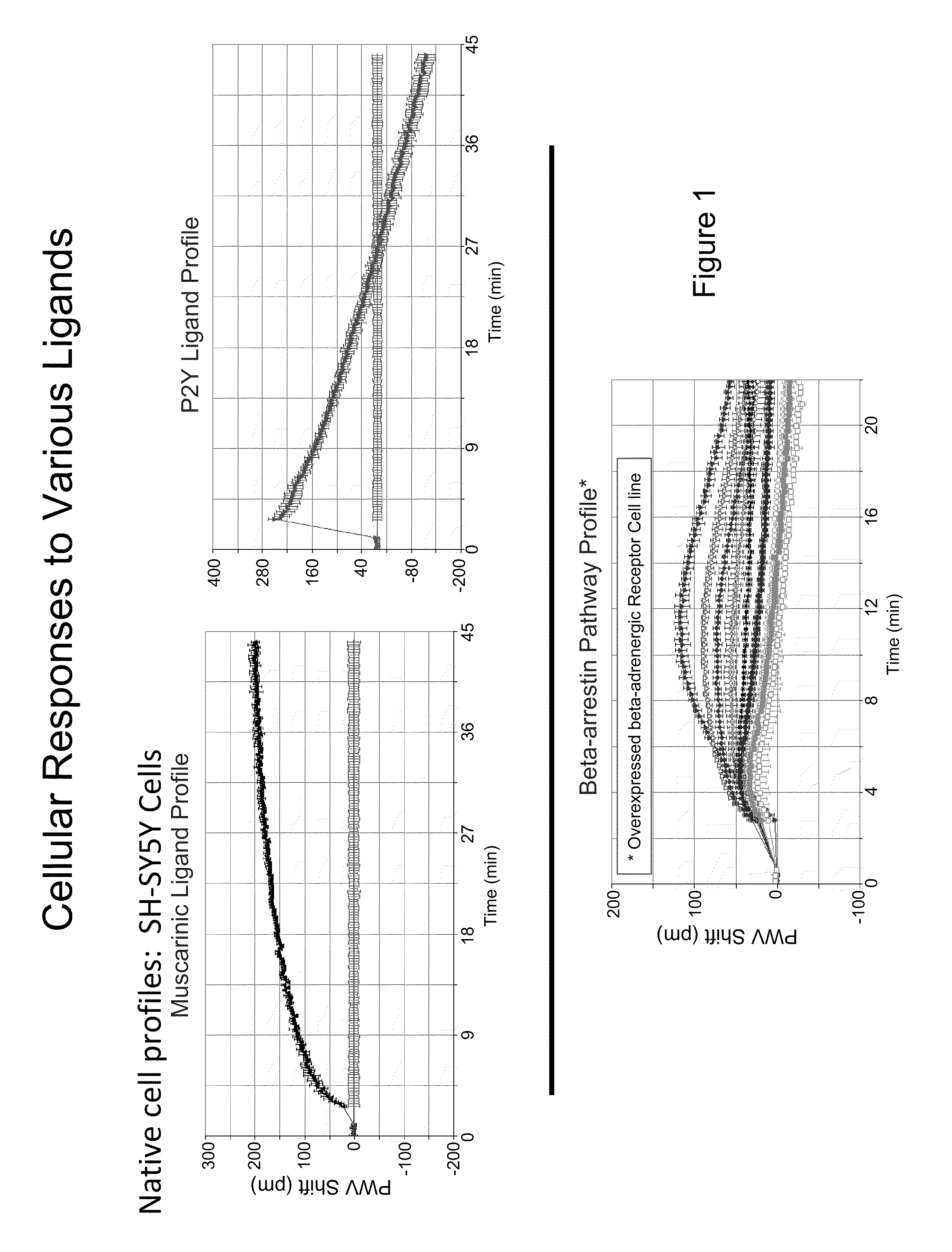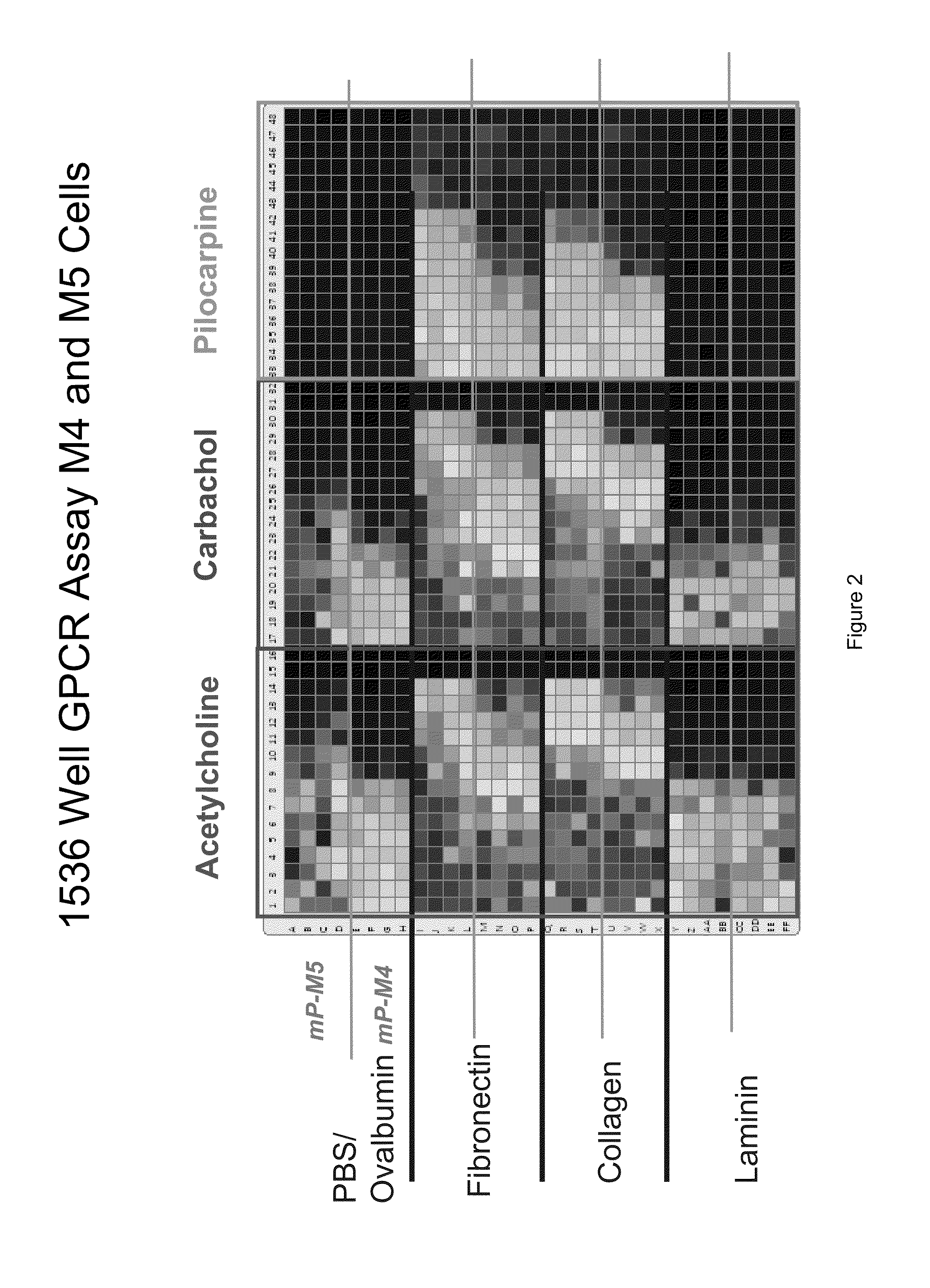Detection of Changes in Cell Populations and Mixed Cell Populations
a cell population and cell technology, applied in the field of mixed cell population analysis, can solve the problems of damage to cells, time-consuming and complicated preparation of biological samples for analysis, and limited field of cell analysis, in particular, stem cell analysis, primary cell analysis,
- Summary
- Abstract
- Description
- Claims
- Application Information
AI Technical Summary
Benefits of technology
Problems solved by technology
Method used
Image
Examples
Embodiment Construction
[0050]As used herein, the singular forms “a,”“an”, and “the” include plural referents unless the context clearly dictates otherwise.
Biosensors
[0051]Biosensors of the invention can be colorimetric resonant reflectance biosensors. See e.g., Cunningham et al., “Colorimetric resonant reflection as a direct biochemical assay technique,” Sensors and Actuators B, Volume 81, p. 316-328, Jan. 5, 2002; U.S. Pat. Publ. No. 2004 / 0091397; U.S. Pat. No. 7,094,595; U.S. Pat. No. 7,264,973. Colorimetric resonant biosensors are not surface plasmon resonant (SPR) biosensors. SPR biosensors have a thin metal layer, such as silver, gold, copper, aluminum, sodium, and indium. The metal must have conduction band electrons capable of resonating with light at a suitable wavelength. A SPR biosensor surface exposed to light must be pure metal. Oxides, sulfides and other films interfere with SPR. Colorimetric resonant biosensors do not have a metal layer, rather they have a dielectric coating of high refracti...
PUM
| Property | Measurement | Unit |
|---|---|---|
| wavelengths | aaaaa | aaaaa |
| grating period | aaaaa | aaaaa |
| grating depth | aaaaa | aaaaa |
Abstract
Description
Claims
Application Information
 Login to View More
Login to View More - R&D
- Intellectual Property
- Life Sciences
- Materials
- Tech Scout
- Unparalleled Data Quality
- Higher Quality Content
- 60% Fewer Hallucinations
Browse by: Latest US Patents, China's latest patents, Technical Efficacy Thesaurus, Application Domain, Technology Topic, Popular Technical Reports.
© 2025 PatSnap. All rights reserved.Legal|Privacy policy|Modern Slavery Act Transparency Statement|Sitemap|About US| Contact US: help@patsnap.com



